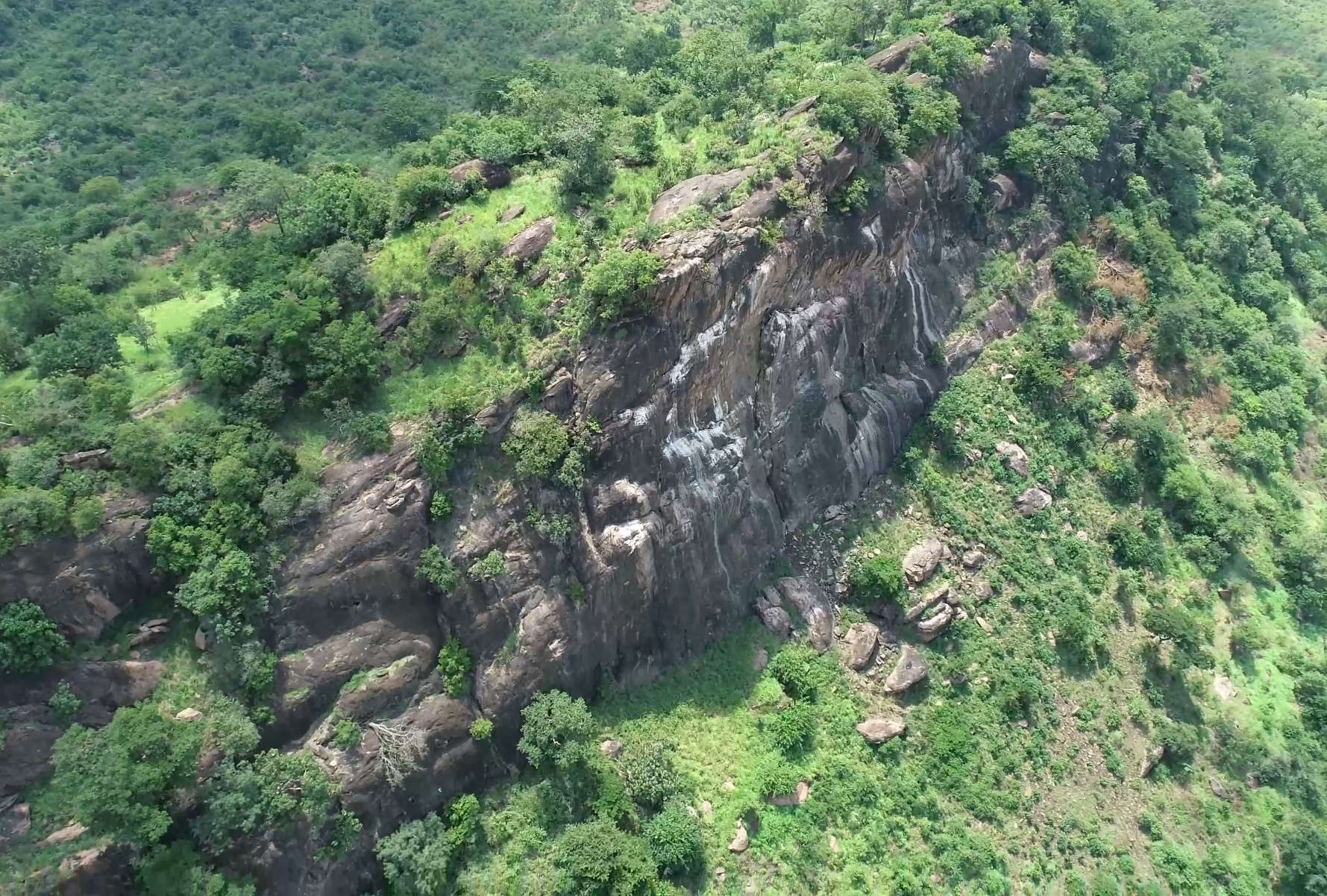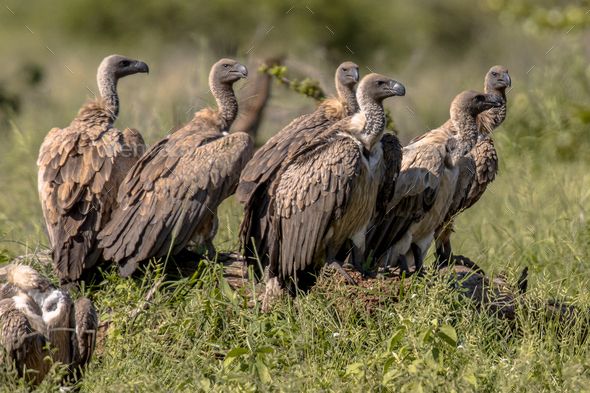Uganda’s only known breeding colony of the critically endangered Rüppell’s vulture is showing troubling signs of decline, according to researchers and forest managers led by ornithologist Ivan Oruka.
Field monitoring conducted between 2023 and 2025 in two cliff-nesting sites within the Luku Central Forest Reserve, in northwestern Arua district, reveals that human activities, from charcoal extraction and subsistence farming to opportunistic hunting, are rapidly degrading the vultures’ fragile habitat.
The pressures have intensified amid growing refugee inflows from the Democratic Republic of Congo and South Sudan, whose displaced populations now rely heavily on the reserve’s dwindling resources, threatening to push this last Ugandan colony of the world’s highest-flying bird toward collapse.
High on the limestone cliffs where the vultures have nested for generations, the evidence of human pressures is stark: scorched ground, nearby charcoal kilns, bleached rock faces and fewer adult birds circling at dusk. The Luku colony, a rare nesting refuge within a roughly 4,000-hectare forest reserve, produced successful chicks in only eight of 14 nests monitored between 2023 and 2024, a 57 percent success rate that falls well below historical benchmarks for undisturbed Gyps colonies and demonstrates a population struggling to replace itself.
Those figures come from the first focused study of the site, published this year, and were gathered by a team that combined field observation with community interviews.

Luku’s story is not an isolated conservation anecdote; it is a microcosm of a continental emergency. Rüppell’s vulture populations across West, Central and East Africa have collapsed, estimated declines exceed 90 percent in many regions over the past four decades, leaving perhaps only a few tens of thousands of individuals continent-wide.
The loss of breeding sites such as Luku accelerates that trajectory because Rüppell’s are long-lived, slow-breeding birds that raise a single chick per year. When nests fail, recovery is measured in decades.
Read also: IUCN confirms extinction of Slender-billed Curlew, once common across North Africa
Drivers in Luku are painfully pragmatic. The charcoal economy in Uganda is large and deeply entrenched: FAO records show annual wood-charcoal production in Uganda measured in the order of 1.2 million tonnes in recent years, feeding urban demand and informal supply chains that stretch from local collection points to markets in Arua and as far as Kampala.
In Luku, charcoal is often harvested by women and children working in rudimentary kilns and returning with sacks sold for a few thousand Ugandan shillings, sums that do not reflect the ecological cost. The kilns themselves smoke cliffs and roosting trees, disrupting incubation and prompting adult birds to abandon nests at critical stages.
Read also: From dialogue to deals: Africa Climate Investment Summit 2025 paves way for scalable climate finance
Arua district’s demographic pressures compound the ecological strain. The border with the Democratic Republic of Congo and proximity to South Sudan have seen waves of displacement: UNHCR statistics and sub-office reports detail hundreds of thousands of refugees hosted within the region and in settlements such as Imvepi and Rhino Camp, placing additional demand on firewood, charcoal and farming land. Refugee populations can constitute a significant share of local inhabitants in host districts, and when livelihoods are scarce, forest resources become the default safety net.
Beyond the physical removal of trees, the reserve is suffering subtler ecological shifts. Edge effects from expanding farms and settlements favor “synanthropic” species, baboons, vervet monkeys, pied crows, that thrive near people and in doing so introduce new threats. Baboons are poisoned by farmers protecting crops; carcasses contaminated with agricultural toxins can kill scavengers.
Pied crows are effective nest predators and disturbance agents, flushing incubating adults and exposing eggs and chicks to the elements and predators. Such cumulative, cross-cutting pressures multiply the risk profile for a species whose life history offers little margin for loss.
What does Luku mean for Africa’s broader sustainability agenda?
First, it underlines that biodiversity loss and human insecurity are tightly coupled problems. Conservation that treats species protection in isolation from local livelihoods and displacement dynamics will fail. Second, the economics of charcoal and woodfuel are not peripheral; they are central to energy access strategies across many African countries.
Any serious conservation plan must be paired with practical, financed alternatives, expanded access to clean cooking fuels, regulated charcoal value chains, community-managed woodlots and off-reserve income programs, that change incentives on the ground. FAO production figures and supply-chain studies make clear that demand-side interventions in urban markets like Kampala are necessary levers to reduce forest extraction upstream.
Third, protecting cliff-nesting colonies requires a spatially explicit approach: cliffs and their immediate buffer zones should be prioritized for strict protection and community co-management, and monitoring must be expanded. The recent peer-reviewed study from Uganda offers a template: small-scale, repeated nest monitoring combined with ethnographic work can reveal the pathways to nest failure and point to locally tailored mitigation, for example, establishing smoke-free zones during breeding seasons, policing illegal kilns with community rangers, and deploying rapid-response teams to remove poisoned baits.
Finally, Luku is a test of governance. Forestry officials cite low manpower and political interference as constraints; arrests of charcoal burners are reportedly short-lived if local politicians intervene. Strengthening accountability, funding enforcement appropriately, and, crucially, embedding communities as rights-holders in forest governance are politically difficult but necessary steps. The alternative is the slow unraveling of an ecosystem service that vultures provide free of charge: rapid carcass disposal and disease regulation, benefits that cascade through human and livestock health systems.
The cliff ledges at Luku still hold nests, and vultures still circle at dawn. Their presence is a fragile reminder that Africa’s environmental futures hinge on aligning energy policy, humanitarian response and community livelihoods with targeted conservation measures. Protecting a few cliffs in northwestern Uganda would not, on its own, solve the continent’s vulture crisis, but it would be a concrete, measurable action that demonstrates how sustainability policy can, and must, work in practice.
Engage with us on LinkedIn: Africa Sustainability Matters






